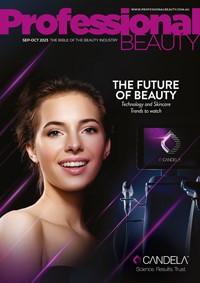A new report from The Australian Centre for Retail Studies (ACRS) provides insight into the current trading conditions and future prospects for Australia’s health and beauty industry.
“Health and beauty is one of Australia’s largest retail segments with $13.4 billion worth of sales in 2007 to 08 and $13.9 billion projected for 2010,” said Andrew Cavanagh, Program Director, ACRS.
The report looks at pharmacies, specialist retailers, department stores and supermarkets and offers insights into consumer and retailer trends in the key product areas of cosmetics, toiletries and pharmaceuticals. Specialist retailers in the report include Napoleon Perdis, Aesop and Jurlique concept stores, along with The Body Shop, Hairhouse Warehouse and online retailer, Perfume Empire.
The report identified a number of growing segments in the health and beauty industry:
Ageing population: a sizeable and fast growing consumer segment due to high levels of disposable income and demand for anti-ageing products.
Male grooming market: men are increasingly concerned about their appearance, shifting away from unisex brands in favour of male-specific varieties.
Growing societal acceptance of alternative therapies: consumers are seeking alternatives to prescription medicine.
Organics market: consumers are increasingly concerned about ingredients used in health and beauty products and their effects.
Specialist health and beauty chains: shops and brands that occupy niche markets by offering a deep product range.
According to the report, the Internet has become a significant sales channel with a 14 per cent increase in online cosmetics and toiletries retailing between 2006 and 2007.
With the expertise of trained professional asetheticians potentially compromised by internet sales of beauty products, Professional Beauty asked Alana Jones, a Research Analyst at the ACRS, what this increase in online sales might represent.
Ms Jones said: “The online [sales] channel is by no means intended to replace the traditional retail outlet, but instead act in conjunction with an in-store experience to offer the customer greater convenience. The health and beauty industry is definitely an industry with high service requirements, and an online space could never replace this aspect of retailing, and in some instances the online channel may be best utilised as an information portal, rather than a sales channel. But in saying that, selling online is always a great way, especially for small retailers, to reach geographically dispersed customers and could help spread the word about smaller, up-and-coming brands. It is also important to note that an increased amount of research shows that customer are particularly receptive to buying health and beauty products online, more so than other retail categories, and Australians are particularly active in buying products from international retailers that don’t have a store presence here, and can only be accessed online.”
The report also found that supermarkets are offering a greater range of health and beauty products to shelves due to reduction in legislative controls governing the sale of these products. And “experiential retailing” is on the rise, breaking through the cluttered retail environment to provide customers with something more exciting to see or do.
Emerging product trends outlined in the report suggest that product innovation and the continual development of new products are key to capturing and maintaining consumers. Also, with consumers more conscious of the environmental impact of products, retailers and product developers must incorporate sustainable product design into their operations. And high consumer demand for premium products and private labels means retailers are tailoring their offering to accommodate this demand.
“Retailers in this lucrative segment will reap the benefits of paying close attention to consumer trends and shifts in the market. With challenges like the Global Financial Crisis, petrol prices and rental rates on the rise and increasingly health conscious consumers, this report is a valuable resource in a climate that retailers must be receptive to,” said Mr Cavanagh.

